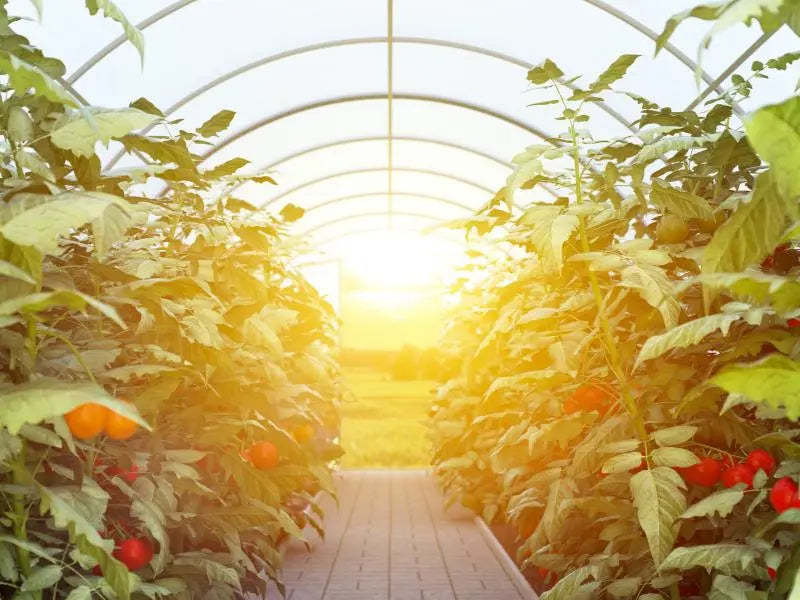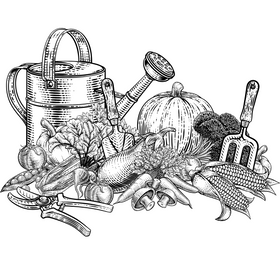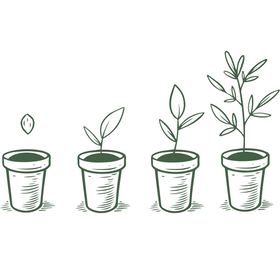
The Ultimate Greenhouse Buying Guide
Key Considerations for Buying a Greenhouse
-
Introduction
- Purpose of the Guide
- Overview of Greenhouse Gardening
-
Understanding Greenhouses
- Definition and Purpose
- History and Evolution
-
Types of Greenhouses
- Freestanding vs. Attached
- Materials Used in Greenhouse Construction
-
Choosing the Right Size and Location
- Space Considerations
- Orientation and Climate Considerations
-
Greenhouse Features and Technologies
- Ventilation, Heating, and Cooling Systems
- Automated Controls and Smart Technologies
-
Sustainability and Eco-Friendly Practices
- Eco-Friendly Materials and Designs
- Energy Efficiency in Greenhouses
-
Greenhouse Gardening Basics
- Plant Selection and Care
- Seasonal Gardening Tips
-
Budget and Cost Considerations
- Cost Range and Investment
- Long-term Value and ROI
-
Installation and Maintenance
- Setting Up Your Greenhouse
- Ongoing Maintenance and Care
-
FAQs and Common Concerns
- Addressing Your Greenhouse Queries
Embarking on the journey of choosing a greenhouse can be both exciting and daunting. Whether you're a seasoned gardener or a budding green thumb, selecting the right greenhouse is a crucial decision. That's where our comprehensive Greenhouse Buying Guide comes in – designed to navigate you through the myriad of options and considerations in the world of greenhouses.
In this guide, we aim to demystify the process of selecting the perfect greenhouse for your needs. From understanding the basics to diving deep into the specifics of materials, sizes, and advanced features, we've got you covered. Our goal is to empower you with knowledge so that you can confidently make an informed choice.
2024 brings new trends, technologies, and innovations in greenhouse gardening. In this guide, we'll explore the Best Greenhouses for 2024, tailored to a variety of needs and preferences. Whether you're looking for an eco-friendly option, a technologically advanced setup, or just starting out with something simple yet effective, we have insights and recommendations to suit every gardener.
As greenhouse enthusiasts ourselves, we understand the importance of making the right choice - one that aligns with your gardening goals, space, climate, and budget. Let's explore greenhouses together, and find the greenhouse that not only meets your needs but also fuels your passion for gardening.
1. Understanding Greenhouses
Definition and Purpose of a Greenhouse
What exactly is a greenhouse? At its core, a greenhouse is a structure, typically made of glass or transparent plastic, designed to cultivate and protect plants. It creates a unique microclimate that promotes plant growth, extending growing seasons, and safeguarding tender plants from adverse weather. Greenhouses are enclosed structures that create a controlled environment for plants, providing shelter from adverse weather conditions and allowing for optimal growth. They utilize transparent glazing materials to maximize sunlight penetration, while ventilation systems regulate temperature and humidity levels.
Greenhouses serve a multitude of purposes. For some, they are sanctuaries for exotic plants that require specific conditions to thrive. For others, they are practical solutions for year-round vegetable gardening. The benefits of a greenhouse are extensive, ranging from enabling an early start for seedlings in spring to growing fresh produce in winter. They offer a controlled environment for plants, free from external threats like pests and harsh weather, which is why we can count the many greenhouse benefits for successful, versatile gardening.
History and Evolution of Greenhouses
Tracing the history of greenhouses takes us back centuries. The concept of a greenhouse, originally known as a conservatory, was first popularized in the 17th century in Europe. These structures were initially built to house exotic plants brought back by explorers from tropical regions. Over time, the design and purpose of greenhouses evolved, becoming accessible to not just the elite but also to hobbyists and commercial growers.
The evolution of greenhouse gardening is a testament to human ingenuity in agriculture. From the ornate glass conservatories of the Victorian era to the modern, technologically-advanced structures we see today, greenhouses have continually adapted to meet the changing needs of gardeners and horticulturists. This evolution reflects our growing understanding of plant science, climate control, and sustainable gardening practices.
In recent years, the trend in greenhouse gardening has shifted towards sustainability and efficiency. Advances in materials, such as polycarbonate panels, and the integration of smart technologies for climate control and irrigation, have made greenhouses more energy-efficient and productive.
The story of greenhouses is not just about structures of glass and steel; it's about the ongoing journey of enhancing our relationship with nature and optimizing plant growth. As we continue to innovate and adapt, the role of greenhouses in gardening and agriculture is set to become even more significant.
2. Types of Greenhouses
Freestanding vs. Attached Greenhouses
When delving into the Types of Greenhouses, two primary categories emerge: Freestanding and Attached.
Freestanding Greenhouses are distinct, independent structures placed anywhere on your property. They offer flexibility in terms of location and size. Ideal for larger gardens or commercial uses, they allow for ample light from all sides and can be customized to suit various gardening needs. Their versatility makes them a popular choice among gardening enthusiasts.
Attached Greenhouses, on the other hand, are built as extensions of an existing building, often attached to a house. This design can be more cost-effective, as one wall of the greenhouse is already provided by the existing structure. These greenhouses are perfect for gardeners with limited space or those who wish to easily access their greenhouse from their home. Their convenience and efficient use of space make the Attached Greenhouse a sought-after option for urban gardeners.
Materials Used in Greenhouses
Greenhouses are typically constructed from durable and weather-resistant materials. Common choices include:
- Frame: Aluminum, steel, wood, or composite materials
- Glazing: Glass, polycarbonate panels, or polyethylene film
- Roof: Single- or double-pitched roofs, arched roofs, or lean-to designs
Greenhouses can be constructed using a variety of materials, each offering distinct benefits and characteristics. The choice of material significantly impacts the greenhouse's durability, insulation properties, light transmission, and overall cost. Here's a rundown of the common materials used in greenhouse construction:
- Glass:
- Traditional and popular for its clarity and durability.
- Excellent light transmission.
- Can be costly and requires a sturdy frame.
- Less energy-efficient than some modern materials.
- Polycarbonate:
- A popular choice for its strength and durability.
- Provides good light diffusion.
- More energy-efficient than glass.
- Resistant to breakage.
- Polyethylene Film:
- Economical and widely used for large commercial greenhouses.
- Flexible and easy to install.
- Less durable than glass or polycarbonate, often needing replacement every few years.
- Comes in various thicknesses and grades.
- Acrylic:
- Stronger and more transparent than polycarbonate.
- Resistant to weathering and UV rays.
- Can be more expensive than other plastic materials.
- Fiberglass:
- Durable and lightweight.
- Good light diffusion.
- Can discolor over time, affecting light transmission.
- PVC (Polyvinyl Chloride):
- Commonly used for framing, especially in small or hobby greenhouses.
- Not typically used for covering, except in very lightweight, temporary structures.
- Resistant to corrosion and relatively inexpensive.
- Aluminum:
- Often used for frames due to its strength, durability, and resistance to rust.
- Lightweight and can be used to create large, sturdy structures.
- Wood:
- Traditional material for frames, offering a natural aesthetic.
- Requires treatment or specific types of wood (like cedar) to prevent rot.
- Often used in hobby greenhouses and smaller structures.
- Steel:
- Used for frames in larger, commercial greenhouses.
- Highly durable and can support heavy loads.
- Typically galvanized or treated to prevent rust.
- Ethylene Tetrafluoroethylene (ETFE):
- A high-tech plastic used in advanced greenhouse projects.
- Extremely light and transparent, with high resistance to corrosion.
- More commonly seen in specialized or architectural projects.
The choice of material depends on factors like budget, climate, the type of plants you want to grow, and personal preferences regarding maintenance and aesthetics. Each material has its advantages and drawbacks, so it's essential to consider these when planning your greenhouse.
The materials used in the construction of a greenhouse play a crucial role in its functionality and efficiency. The most common materials are Glass, Polycarbonate, and Plastic, each with its unique benefits.
Glass Greenhouses are the traditional choice, known for their aesthetic appeal and excellent light transmission. Glass is durable and offers a clear view of the plants inside. However, it can be more expensive and requires a sturdy frame to support the heavy material.
Polycarbonate Greenhouses are a more modern innovation, renowned for their strength, lightweight, and insulation properties. Unlike glass, polycarbonate is virtually unbreakable and provides diffused light, which is beneficial for plant growth. These greenhouses are energy-efficient and often more affordable, making them an excellent choice for both hobbyists and professional gardeners.
Plastic Greenhouses offer an economical and flexible solution. They are easy to set up and move, making them ideal for gardeners who require temporary or seasonal greenhouse solutions. While they may not be as durable as glass or polycarbonate, plastic greenhouses are an excellent entry point for beginners.
Each material has its unique advantages and can be chosen based on factors like budget, durability, and the specific requirements of your gardening projects. Understanding these differences is crucial in selecting the right greenhouse materials for your needs.
3. Choosing the Right Size and Location
Space Considerations
One of the first steps in your greenhouse journey is to determine the appropriate size and location. The size of your greenhouse should align with your gardening goals, available space, and the type of plants you wish to cultivate.
When considering size, think about both your current needs and future expansion. Ask yourself questions like: How many plants do I plan to grow? Do I need space for potting and storage? Will I expand my gardening activities in the future? These considerations will help you in choosing greenhouse location that accommodates your greenhouse comfortably and functionally.
Remember, your greenhouse should be accessible, have enough surrounding space for maintenance, and be positioned away from shadows cast by buildings and tall trees.
Orientation and Climate Considerations
The orientation of your greenhouse is crucial for maximizing sunlight exposure, which varies depending on your geographical location. The best orientation for greenhouses generally is to have the longest side facing south if you're in the northern hemisphere. This ensures that your plants receive ample sunlight throughout the year.
Climate plays a significant role in choosing the right greenhouse. In colder regions, you may need a greenhouse with better insulation and perhaps a heating system. In contrast, warmer areas may require effective ventilation and shading to prevent overheating.
Additionally, consider local weather conditions such as wind, snow, and rain. Ensure that your greenhouse is situated and constructed to withstand these elements. For example, in windy areas, a more robust structure with a lower profile might be necessary, while in snowy regions, a steep roof pitch can prevent snow accumulation.
By carefully considering these factors, you can ensure that your greenhouse is not only a thriving environment for your plants but also a sustainable, efficient, and enjoyable space for your gardening activities.
4. Greenhouse Features and Technologies
Ventilation, Heating, and Cooling Systems
A well-functioning greenhouse requires more than just a structure; it needs the right balance of temperature and air circulation to thrive. Understanding the systems for ventilation, heating, and cooling is crucial in creating an optimal environment for your plants.
Greenhouse Ventilation is essential for regulating air flow and temperature. Proper ventilation prevents overheating and ensures a steady supply of fresh air, which is vital for plant health and pest prevention. Options range from manual vent openings to automated systems that respond to temperature changes.
Greenhouse Heating becomes a priority, especially in cooler climates or during the winter months. Various heating solutions include electric heaters, gas heaters, or even solar-powered options. The choice of heating system depends on your greenhouse size, insulation, and the specific needs of your plants.
Greenhouse Cooling is equally important, particularly in warmer climates or during summer. Effective cooling can be achieved through ventilation, shade cloths, and evaporative coolers. It's important to maintain a consistent temperature, as extreme heat can be as detrimental as the cold.
Automated Controls and Smart Greenhouse Technologies
With advancements in technology, greenhouse automation has become increasingly accessible and beneficial. Automated systems can control various aspects of the greenhouse environment, from irrigation and fertilization to temperature and humidity control.
Smart greenhouses are at the forefront of this technological wave, incorporating sensors and IoT (Internet of Things) devices to monitor and manage greenhouse conditions remotely. These technologies not only make greenhouse management more efficient but also help in reducing energy consumption and improving plant growth.
Automated systems are particularly advantageous for busy gardeners or commercial operations, where consistency and precision can significantly impact the health and yield of the plants. By investing in these modern technologies, gardeners can ensure their plants receive optimal care with minimal manual intervention.
5. Sustainability and Eco-Friendly Practices
Eco-Friendly Materials and Designs
In an era where environmental consciousness is paramount, eco-friendly greenhouses are not just a trend, but a necessity. Sustainable greenhouse practices encompass the use of materials and designs that minimize environmental impact while enhancing functionality.
Materials like recycled plastics, sustainably sourced wood, or eco-friendly polycarbonate panels are increasingly popular in greenhouse construction. These materials are not only less harmful to the environment but often provide superior insulation and durability compared to traditional materials.
Designs that incorporate rainwater harvesting systems, green roofs, and the use of natural pest control methods are also part of sustainable greenhouse practices. These features not only reduce the ecological footprint of your greenhouse but also promote a more natural and healthy environment for plant growth.
Energy Efficiency in Greenhouses
Energy-efficient greenhouses are designed to optimize resource use and reduce operational costs. This involves a variety of practices and technologies aimed at minimizing energy consumption while maintaining an ideal growing environment.
One key aspect of energy efficiency is insulation. Well-insulated greenhouses retain heat more effectively, reducing the need for additional heating. Another factor is the use of energy-efficient heating and cooling systems, like solar heaters or geothermal cooling, which can significantly lower energy consumption.
Additionally, greenhouse energy saving can be achieved through smart technologies. Automated shading systems, led grow lights, and thermostats that adjust the greenhouse climate based on real-time weather conditions are examples of how technology can be harnessed to save energy.
By prioritizing sustainability and energy efficiency, gardeners can not only reduce their carbon footprint but also enjoy cost savings in the long run. The integration of eco-friendly practices and energy-efficient technologies in greenhouses is a testament to the gardening community's commitment to protecting and preserving our planet.
6. Greenhouse Gardening Basics
Plant Selection and Care
Embarking on greenhouse gardening starts with selecting the right plants. The controlled environment of a greenhouse allows for a broader range of plant options, but it's important to choose plants that align with your greenhouse conditions and your gardening goals.
When considering plants for greenhouses, think about the plant's light, temperature, and humidity needs. Some plants thrive in warm, humid environments, while others prefer cooler, drier conditions. Popular choices include vegetables like tomatoes and cucumbers, herbs, flowering plants, and even exotic tropical plants.
Care for greenhouse plants involves consistent monitoring and maintenance. This includes regular watering, ensuring adequate ventilation, managing humidity levels, and pest control. Since greenhouses can create an isolated environment, it's crucial to keep a close eye on plant health and react promptly to any signs of distress or disease.
Seasonal Gardening Tips
Year-round greenhouse gardening is one of the greatest advantages of owning a greenhouse. It allows you to grow plants throughout the year, irrespective of the outside weather conditions. However, each season brings its own set of challenges and opportunities.
During spring, focus on starting seedlings and preparing for the growing season. Summer requires diligent ventilation and shading to protect plants from overheating. In autumn, it's time to start planting for the winter and adjust the heating system as the temperature drops. Winter is ideal for growing cold-tolerant crops and planning for the next year.
Seasonal greenhouse tips also include adjusting your watering schedule according to the season, changing the layout of the greenhouse to maximize light exposure, and transitioning between different types of crops as the seasons change.
By understanding the basics of greenhouse gardening, including plant selection and seasonal care, you can ensure a thriving and productive greenhouse throughout the year. These foundational practices are key to enjoying the full benefits of greenhouse gardening.
7. Budget and Cost Considerations
Cost Range and Investment
One of the critical aspects of embarking on your greenhouse journey is understanding greenhouse costs and effectively budgeting for a greenhouse. The investment required for a greenhouse can vary significantly based on size, materials, features, and the technology you choose.
Basic, smaller greenhouses can be quite affordable, offering a simple solution for hobbyists or beginners. On the other hand, larger, more technologically advanced greenhouses, designed for serious gardening or commercial purposes, require a higher initial investment. It's essential to consider not just the cost of the greenhouse structure itself but also the expenses related to installation, accessories, and ongoing maintenance.
When planning your budget, think about what you need versus what you want. Prioritize features that are essential for the type of gardening you intend to do. Remember, investing a bit more upfront for quality and durability can save you money in the long run due to fewer repairs and replacements.
Long-term Value and ROI
Considering the greenhouse investment from a long-term perspective is crucial. A well-constructed and maintained greenhouse can last for many years, making it a valuable addition to your property.
The ROI on greenhouses isn't just measured in monetary terms but also in the quality of life improvements, the joy of gardening, and the potential yield of plants. For those growing fruits, vegetables, or herbs, the greenhouse can provide a return in terms of the produce that would otherwise be purchased from a store. For plant enthusiasts, the value lies in the ability to cultivate a wider variety of plants, including exotic species that wouldn't survive in the local climate outside a greenhouse.
Additionally, a greenhouse can contribute to energy savings and eco-friendliness by providing a controlled environment for growing plants year-round, reducing the need for purchasing out-of-season produce that often comes with a higher carbon footprint.
In summary, while the initial cost of a greenhouse can be significant, the long-term benefits and potential savings make it a worthwhile investment for many gardening enthusiasts. It's about balancing immediate costs with future returns, both monetary and in terms of lifestyle enrichment.
8. Installation and Maintenance
Setting Up Your Greenhouse
The process of setting up a greenhouse is a crucial step towards ensuring its effectiveness and longevity. A comprehensive greenhouse installation guide is invaluable in this phase. The installation process varies based on the type and complexity of the greenhouse you have chosen.
For smaller, simpler greenhouses, diy installation might be feasible. These typically come with detailed instructions and can be set up with basic tools and a bit of handyman skills. For larger, more complex structures, professional installation might be necessary to ensure everything is constructed correctly and safely.
Key considerations during installation include choosing a level site, ensuring proper orientation for maximum sunlight exposure, and setting up essential systems like irrigation, ventilation, and heating. It's also important to consider accessibility for maintenance and emergency access.
Ongoing Maintenance and Care
Regular greenhouse maintenance is essential to keep your greenhouse functioning optimally and to extend its lifespan. Caring for your greenhouse involves routine checks and upkeep tasks.
Basic maintenance tasks include cleaning the greenhouse to ensure maximum light penetration, inspecting for damages, especially after extreme weather events, and ensuring that all systems like ventilation, heating, and cooling are functioning correctly.
It's also important to monitor the health of your plants regularly. This includes checking for signs of pests or diseases, ensuring proper soil nutrition, and adjusting watering schedules as needed. Effective pest management strategies, such as introducing beneficial insects or using organic pesticides, can be critical in maintaining a healthy greenhouse environment.
Another aspect of maintenance is seasonal preparation. This includes tasks like insulating the greenhouse for winter, setting up shading for the summer months, and making necessary adjustments to the ventilation and irrigation systems as the seasons change.
By following a regular maintenance routine and addressing issues promptly, you can ensure that your greenhouse remains a thriving environment for your plants and a joyful space for your gardening activities.
9. FAQs and Common Concerns
Addressing Your Greenhouse Queries
Navigating through the world of greenhouses can bring up a lot of questions. In this section, we'll address some of the most common greenhouse FAQs and concerns that prospective and current greenhouse owners often have.
Can I use a greenhouse in any climate?
Absolutely! Greenhouses are versatile structures that can be used in a variety of climates. The key is to choose the right type of greenhouse and modify it with the appropriate heating, cooling, and ventilation systems to suit your specific climate.
How much time does greenhouse gardening require?
The time commitment for greenhouse gardening can vary based on the size of your greenhouse and the types of plants you're growing. Generally, it requires a consistent commitment to plant care, maintenance, and monitoring of environmental conditions.
Is it more cost-effective to build a DIY greenhouse or buy a pre-fabricated one?
This depends on your specific needs, budget, and handyman skills. A DIY greenhouse can be more cost-effective but requires time and effort to build. Pre-fabricated greenhouses offer convenience and professional design, which might be preferable for some gardeners.
Can I grow organic produce in my greenhouse?
Yes, you can grow organic produce in your greenhouse. It involves using organic soil, avoiding chemical pesticides and fertilizers, and implementing natural pest control methods.
Do I need a permit to install a greenhouse?
This depends on your local regulations. Some areas require permits for structures like greenhouses, especially if they are of a certain size or involve electrical or plumbing work. It's always best to check with your local authorities.
How do I control pests in my greenhouse?
Pest control in greenhouses involves a combination of preventative measures, such as keeping the area clean and monitoring plants closely, and interventions like introducing beneficial insects, using organic pesticides, or implementing physical barriers.
Can greenhouses be used all year round?
Yes, greenhouses can be used throughout the year. In colder months, additional heating and insulation might be necessary, while in warmer months, adequate ventilation and shading are important.
What is the best flooring for a greenhouse?
The best flooring for a greenhouse can vary. Common options include concrete, gravel, or natural soil. Each has its advantages and can be chosen based on your specific needs and preferences.
How do I ensure proper ventilation in my greenhouse?
Proper ventilation can be achieved through a combination of roof vents, side vents, and exhaust fans. Automated ventilation systems can provide optimal airflow and temperature regulation.
What size greenhouse should I get?
The appropriate size depends on the number of plants you intend to cultivate and the activities you plan to carry out within the structure.
Which glazing material is best?
Glass offers superior light transmission and durability, while polycarbonate panels provide better insulation and impact resistance. Polyethylene film is the most affordable option but requires more frequent replacement.
What are the best features to look for in a greenhouse?
Ventilation systems, heating and cooling systems, automated controls, and shelving and benching are essential features.
How much does a greenhouse cost?
Greenhouse costs vary widely depending on size, materials, and features. Plan your budget accordingly.
What are the pros and cons of freestanding vs. attached greenhouses?
Freestanding greenhouses offer greater flexibility but may require additional foundations and structural support. Attached greenhouses are integrated into existing structures for a seamless design.
How do I maintain a healthy growing environment in my greenhouse?
Regular cleaning, proper ventilation, temperature regulation, pest control, and disease prevention are crucial for maintaining healthy plants.
These FAQs are just a starting point to help address some of the common questions and concerns about greenhouse gardening. For more detailed information and personalized advice, feel free to contact us directly.
We hope that you now feel equipped and confident in making your greenhouse buying decision. Remember, choosing the right greenhouse is about finding the perfect balance between your gardening needs, space, climate considerations, and budget.
At The Greenhouse Pros, we are dedicated to helping you every step of the way in this exciting journey. We encourage you to explore our wide range of greenhouse products, each carefully selected to cater to different gardening styles and needs. Whether you're a beginner or an experienced gardener, we have something for everyone.
If you have any questions or need personalized advice, don't hesitate to contact The Greenhouse Pros for greenhouses. Our team of experts is always ready to provide you with tailored recommendations and support to ensure you find the greenhouse that's just right for you.
A greenhouse can provide essential control over the growing environment of plants. Whether you’re a hobby gardener, a professional, or simply someone who cares about their flora, a greenhouse is a valuable tool. Choosing the right greenhouse is essential, which is why we’ve put together this Ultimate Greenhouse Buying Guide to make your decision easier.
First, consider what you will be growing. Different greenhouses are suited for different types of flora. Some greenhouses are designed to maintain a high level of heat and humidity which is ideal for tropical plants. But if you plan on growing vegetables, these conditions might not be tailored for your needs. Therefore, it’s important to choose a greenhouse that aligns with your specific gardening goals.
Gardeners should also focus on the size of the greenhouse. You don’t want to get a greenhouse that is too small for your needs. Consider the amount of space you have available for the greenhouse, as well as the number of plants you plan on growing. Remember, it’s better to have too much space than not enough! Also, make sure to think about the potential for future expansion.
Another factor to consider when buying a greenhouse is the material. Different materials can alter the insulation, and ultimately, the success of your gardening. Whether it be aluminium, wood, polycarbonate or glass, each material has its own set of benefits and drawbacks.
Lastly, consider your budget. Like all things, greenhouses can range significantly in price. It’s crucial to balance your needs with the cost to ensure you can maintain your greenhouse effectively.





